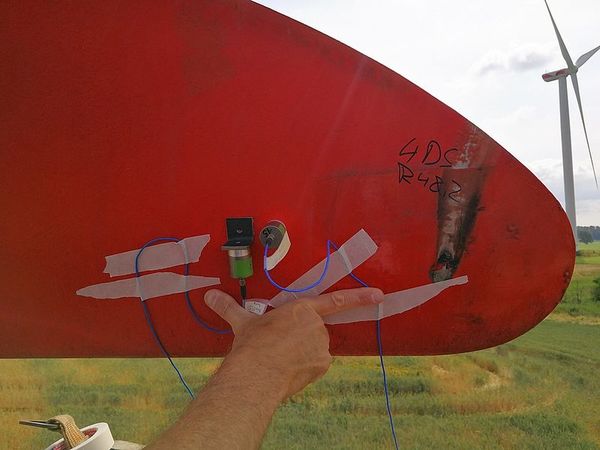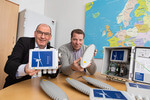Extending Turbine Life with Research
What to do with old wind turbines? Dismantle? Or continue operation? But if so, how long will they last? To find answers to these questions in the future, the University of Rostock and W2E Wind to Energy have launched the DynAWind² research project, funded by the German Federal Ministry of Economy with € 1.9 million (until 2021). The project aims to develop a process exploiting the structural reserves of old wind turbines.
The University of Rostock, with its Chairs of Structural Mechanics and Technical Mechanics/Dynamics, has extensive expertise in the fields of fatigue strength and dynamic analysis of large, highly stressed structures. W2E contributes to the project with extensive experience in designing innovative wind turbines and will deliver a prototype turbine for the planned experimental investigations.

The vibration measurement is carried out on the rotor blade of a 2-megawatt turbine (Image: University of Rostock / Andreas Schulze)
As Dr. Roland Stoer, Managing Director of WINDnovation, points out, the Berlin-based blade developer WINDnovation is enthusiastic about long-term behaviour studies of rotor blades made of composite materials: "For us as blade developers, knowledge of the actual stresses and strains on the rotor blades is of great benefit for improving our design methods".
Dr. Torsten Schütt, Managing Director of W2E, agrees: "The continuous cooperation with the University of Rostock is a great benefit for the development of ultra-modern technologies, but also for our company as a whole. In the past two years, we were the first wind turbine developer to use inertial measurement technology on our turbines". The measurement technology enables to record translational and rotational vibrations of wind turbines around all three spatial axes with just one sensor.
- Source:
- Universität Rostock
- Author:
- Windfair Staff
- Email:
- press@windfair.net
- Keywords:
- Universität Rostock, research, life span, wind turbine, reserve, fatigue, blade, prototype
























